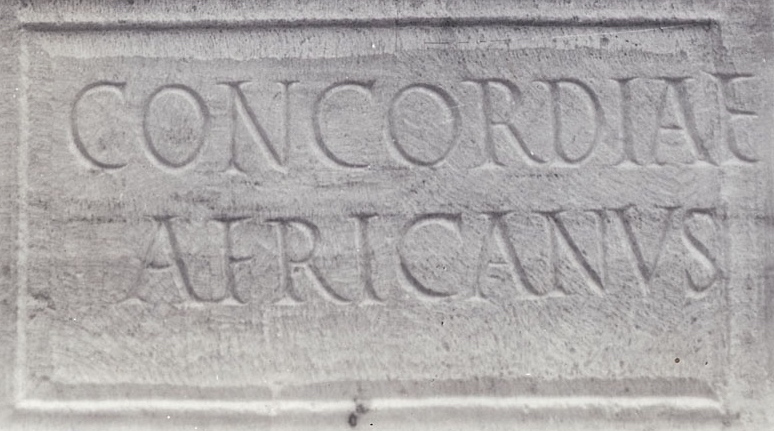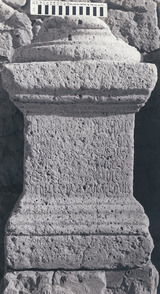Description: Moulded base carved in one block with an Attic base
(w:
0.44 x h:
0.72 x d:
0.44) of
coarse grey limestone.
Text: Inscribed on one face
(die, w:
0.32 x h:
0.36).
Letters: Rustic capitals: 0.025-0.04
Date: First-third centuries CE (lettering, content)
Findspot:
Tripoli:
Oea:
Reused in an Arab house in the Tripoli Oasis.
Original location: Unknown
Last recorded location:
Tripoli Castle.
Liber pater sanctissime arcem meam qui possides et ad sacellum uoueram urbis tuum et coniugis et hic tibi uotum dico dentes duos Lucas bouis Guey, 1952
English translation
Translation by: J. M. Reynolds
Most holy Father Liber, who are the master of my citadel, I had vowed at your shrine ?in the city [also for my wife?] and here I dedicate to you what I promised, two elephant tusks.
Commentary
Line 6 Lucae bouis is an elephant; also in 295, line 11.
Jean Guey regards the text as a verse in Iambic dimeters and restores as above. The restorations proposed in line 2 and 4 are acceptable on epigraphic grounds and surviving traces of letters are compatible. They are more difficult in line 3 where there seems to be insufficient space for s[acellum] , and line 5 where there appear to be traces of S after HI[C]
Bibliography: CIL VIII, 1881 10488, CIL VIII suppl.1, 1891. 11001; Romanelli, 1920, 376 ff., whence AE, 1922.110, Aurigemma, 1940a, VII:80 ff., fig. 16, whence AE, 1942-43.3. Guey, 1952 32, whence AE, 1952.164; IRT, 1952, 230, Degrassi A., 1954, ; Reynolds, 1955, 142, whence AE, 1957.244, IRT, 2009, 231, EDH 018671; for BSR images see BSR Digital Collections.

